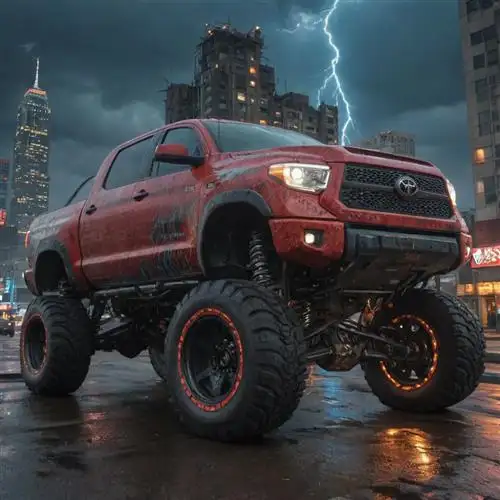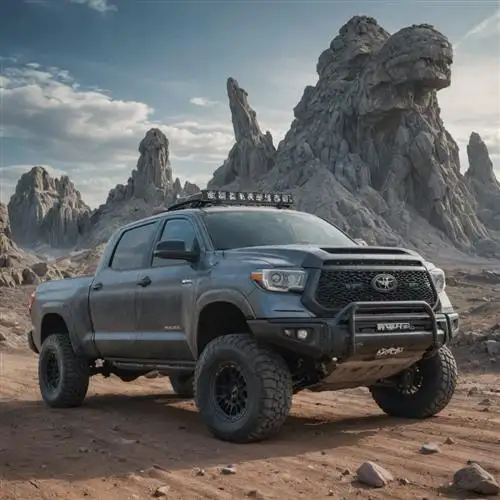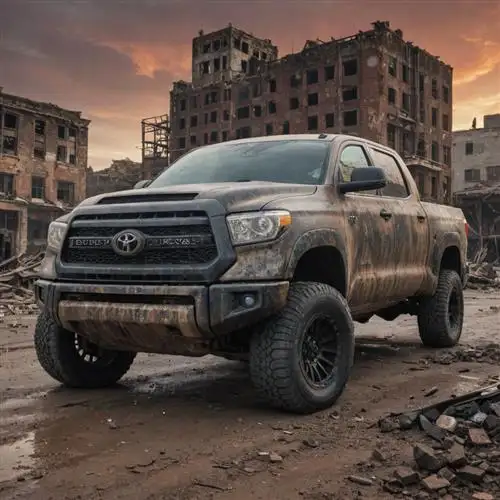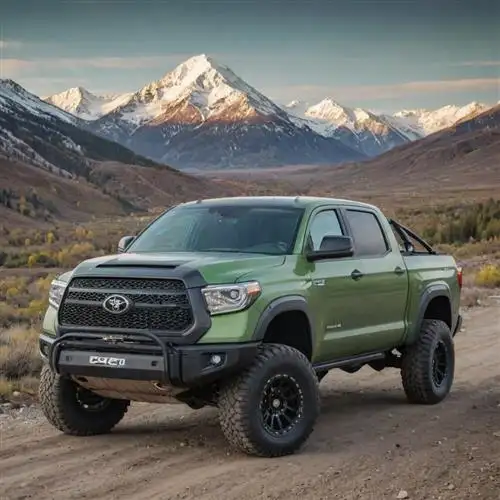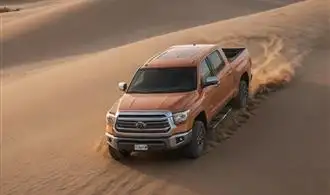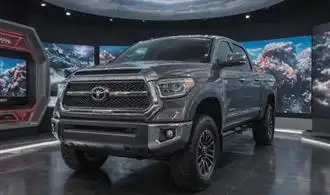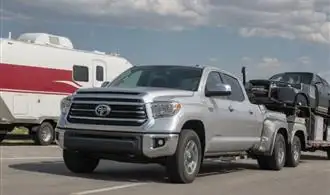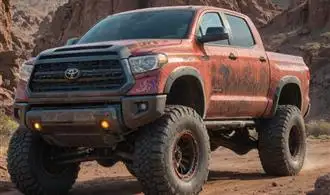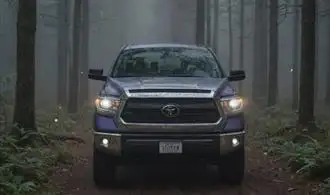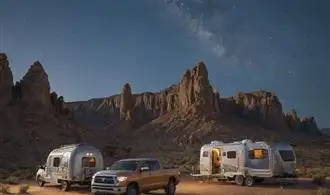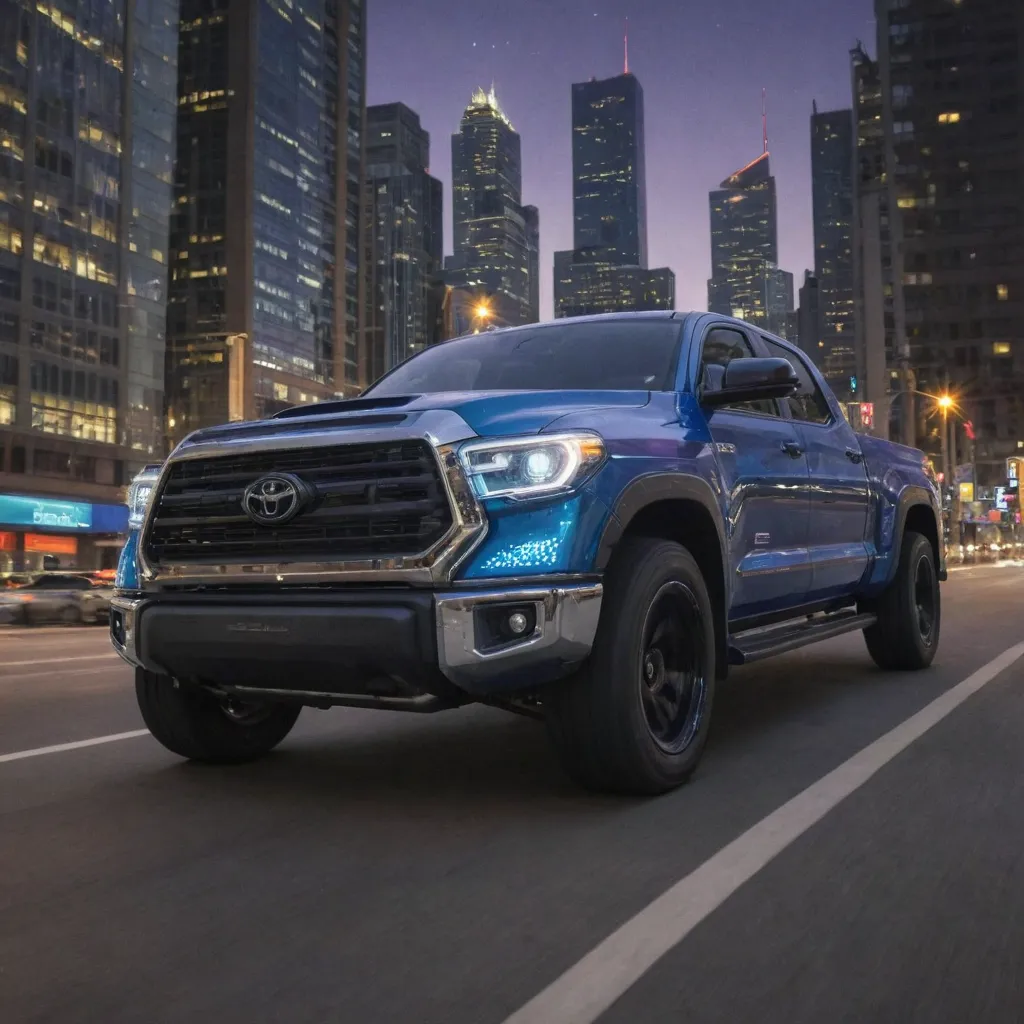
Lack of Engine Upgrades
One of the primary reasons your Toyota Tundra's performance may not be up to par is the lack of engine upgrades. The Tundra, while a rugged and capable pickup, often falls short in terms of raw power and performance compared to its competitors. This is largely due to Toyota's conservative approach to engine development, which prioritizes reliability and efficiency over pure power output.
The stock engine options in the Tundra, while reliable, often lack the punch that many Tundra owners desire. The base 4.6-liter V8 engine produces a respectable 310 horsepower, but this may not be enough for those seeking a more thrilling driving experience or enhanced towing and hauling capabilities. The larger 5.7-liter V8 engine, while offering 381 horsepower, still falls short of the power outputs found in rivals like the Ford F-150 and Ram 1500.
To address this issue, many Tundra owners turn to aftermarket engine upgrades. These can include the installation of performance camshafts, superchargers, or turbochargers, which can significantly boost the engine's output. However, it's important to note that these modifications can be complex and may require specialized knowledge and tools to install properly. Additionally, they can impact the vehicle's warranty, fuel efficiency, and even the overall reliability of the engine.
Another option for Tundra owners is to explore engine displacement upgrades, which involve replacing the stock engine with a larger displacement unit. This can provide a substantial increase in power and torque, but it's a more involved and costly process that often requires extensive modifications to the vehicle's engine bay and supporting systems.
Subpar Suspension Tuning
One of the primary reasons your Toyota Tundra's performance may not be living up to your expectations is the subpar suspension tuning. The suspension system plays a crucial role in the overall handling, comfort, and capability of your vehicle, and if it's not properly tuned, you're likely to experience a range of issues that can detract from your driving experience.
The Tundra's suspension is designed to provide a balance of on-road comfort and off-road capability, but this delicate balance can be easily disrupted if the suspension components are not properly calibrated. Factors such as the shock absorbers, spring rates, and suspension geometry all play a significant role in determining the Tundra's handling characteristics, and if any of these elements are not optimized, you may notice a decline in performance.
One common issue with the Tundra's suspension is the tendency for the rear end to feel "bouncy" or "floaty" when traversing uneven terrain or during sudden maneuvers. This can be the result of the shock absorbers being too soft or the spring rates being too low, which can lead to excessive body roll and a loss of stability and control.
Additionally, the Tundra's suspension geometry may not be properly aligned, which can result in a "wandering" or "vague" steering feel, making it difficult to maintain a straight line and reducing the vehicle's overall responsiveness. This can be particularly problematic when towing heavy loads or navigating through tight spaces.
To address these issues, it's important to have your Tundra's suspension system thoroughly inspected and, if necessary, tuned by a qualified professional. This may involve replacing worn or damaged components, adjusting the spring rates and shock absorber settings, and ensuring the suspension geometry is properly aligned.
Inadequate Brake Upgrades
One of the primary reasons your Toyota Tundra's performance may not be up to par is the lack of proper brake upgrades. The stock braking system on the Tundra, while capable, can quickly become overwhelmed when the vehicle is subjected to heavy loads, towing, or aggressive driving. Upgrading the brakes is a critical modification that can significantly improve your truck's stopping power, safety, and overall performance.
When it comes to brake upgrades, many Tundra owners make the mistake of only focusing on the front brakes. While the front brakes do handle the majority of the braking load, neglecting the rear brakes can lead to an unbalanced braking system, reducing overall effectiveness and potentially leading to dangerous situations on the road.
- Front Brake Upgrade: Install larger, high-performance brake rotors and calipers designed specifically for the Tundra. This will provide more surface area and clamping force, resulting in better braking performance.
- Rear Brake Upgrade: Upgrade the rear brake pads, rotors, and potentially the calipers to match the improved front braking components. This will ensure a balanced and proportional braking system.
- Brake Fluid Upgrade: Replace the factory brake fluid with a high-performance, high-temperature formulation. This will help maintain consistent braking performance even under extreme conditions.
- Braided Stainless Steel Brake Lines: Replace the factory rubber brake lines with braided stainless steel lines. This will eliminate brake line flex, improving pedal feel and response.
- Brake Cooling Upgrades: Install brake cooling ducts or fans to help dissipate heat buildup, which can lead to brake fade and reduced braking performance.
Limited Tire and Wheel Options
The Toyota Tundra is a popular full-size pickup truck known for its rugged capabilities and reliable performance. However, one area where some Tundra owners may feel let down is the limited tire and wheel options available for their vehicles. This can be a significant factor in achieving the desired performance and handling characteristics for their trucks.
One of the primary challenges with the Tundra's tire and wheel options is the limited size range. Many Tundra models come equipped with 18-inch or 20-inch wheels as standard, which can limit the ability to install larger, more aggressive tires. This can be particularly frustrating for owners who want to enhance the off-road capabilities of their Tundra or achieve a more aggressive, sporty look.
Another issue is the limited availability of high-performance tire options for the Tundra. While there are a variety of all-terrain and mud-terrain tires available, the selection of ultra-high-performance or summer-focused tires is relatively limited. This can make it challenging for Tundra owners who want to prioritize on-road handling and responsiveness over pure off-road capability.
The tire and wheel options can also have a significant impact on the Tundra's overall ride quality and comfort. Larger wheels and tires can contribute to a harsher, less compliant ride, which may not be ideal for daily driving or long-distance hauling. This can be a concern for Tundra owners who value a comfortable and smooth driving experience.
To overcome these limitations, many Tundra owners turn to aftermarket tire and wheel options. This can involve upgrading to larger, more capable wheels and tires, or even swapping out the factory suspension components to accommodate the desired tire and wheel combination. However, this can be a costly and time-consuming process, which may not be feasible for all Tundra owners.
Lack of Aerodynamic Improvements
The Toyota Tundra is a rugged and capable full-size pickup truck, but its performance can be limited by a lack of aerodynamic improvements. Aerodynamics play a crucial role in a vehicle's performance, fuel efficiency, and overall driving dynamics. Unfortunately, the Tundra's boxy design and large, square-shaped front end can hinder its aerodynamic efficiency, resulting in reduced power delivery, increased wind resistance, and decreased fuel economy.
One of the primary reasons the Tundra's performance may not be up to par is the lack of advanced aerodynamic features. Many modern pickup trucks incorporate design elements that improve airflow, such as:
- Streamlined front grilles and bumpers
- Aerodynamic side mirrors and door handles
- Underbody panels and rear spoilers
- Active grille shutters that close at higher speeds to reduce drag
Another factor that can impact the Tundra's performance is the lack of attention to air flow management around the vehicle's body. Proper air flow management can help redirect airflow, reducing turbulence and improving overall aerodynamic efficiency. Features like:
- Optimized front grille and bumper design
- Strategically placed air dams and deflectors
- Tailored side skirts and rear diffusers

